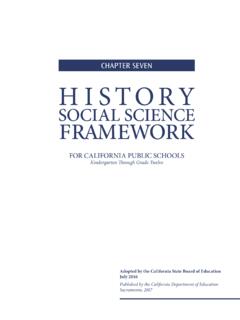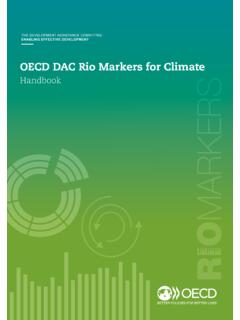Transcription of THE GREEN FAMILY GENEALOGY
1 1 THE GREEN FAMILY GENEALOGY By Lois A. Case February 2, 2022 Compiled by Lois A. Case (deceased 2009) and Luann B. Seamons Edited and maintained by Carl J. Case, , 16 Sunburst Lane, Allegany, NY 14706. Email: Preface: In order to detail the GREEN FAMILY GENEALOGY , the reader should also refer to the Fisk, GREEN , and Wells FAMILY trees. In addition, due to inconsistencies in spelling in prior research and descendant s changing of spelling, Fisk may be used as Fiske and GREEN may be used as Greene. The reader should thus consider both spellings to be equivalent. The GENEALOGY is supplemented with the research of Maxson Frederick Greene that is found at Painted Hills GENEALOGY Society at and submitted by PHGS Members: Dick & Charlotte Baker. The Introduction and Generations in England sections are from the supplement.
2 In addition, considerable history found in The Greene FAMILY and its branches from 861 to 1904. Author La Mance, Lora Sarah Nichols, 1857-,Stowe, Attie A. Nichols, 1843- 2 INTRODUCTION (From research of Maxson Frederick Greene) The Greene FAMILY is an English and American FAMILY , its history being divided into two periods, from 1202 to 1635 in England, and from 1635 to the present in America. In the period for 1630 to 1640, that of the great Puritan Migration into Massachusetts, several men by the name of Greene came to the colonies, most of them settling in New England. Of all these, two of them are of particular interest to us. Both of their names were John, and their wives names were Joan. They were second cousins german, that is, one was the second cousin of the other's father. The elder of these John Greenes settled in Warwick, Rhode Island, after a short sojourn in Massachusetts.
3 He was the founder of the Warwick Greenes, who have furnished more men in public life to the State of Rhode Island than any other FAMILY in the state. It is from this FAMILY that General Nathanael Greene is descended. The other John Greene settled at Quidnessett and became the founder of the Quidnessett Greenes. These two related families have multiplied so that today, not even the Smiths, Joneses, or Johnsons outnumber them in their native state. It is said to be unwise to speak ill of any Rhode Islander to a Greene because he is sure to be a Greene or a kin of the Greenes! Rhode Island itself might better have been called the State of Greene because of the part the Greene FAMILY has played in its entire history from the beginning, the two John Greenes being associated with Roger Williams in the founding of the colony. The John Greene in which we are particularly interested in this sketch is he of Quidnessett, often spoken of as John of Quidnessett.
4 There was a tradition or legend that persisted long years after his coming to Rhode Island that he was really John Clarke, one of the Regicide Judges who condemned Charles I to death in 1649, and that he fled to Massachusetts after the Restoration in 1660 to escape the fury of the Cavaliers, changing his name to the common one of Greene. The story is impossible, however, because we have positive proof, through an affidavit of his written in 1679 that he was with Richard Smith "forty years and more ago" when the latter established his trading post at Aquidneset, or Quidnessett. That would be 1639 at least, ten years before Charles I lost his head. The origin of this story is explained by Mrs. La Mance in her book, The Greene FAMILY and Its Branches, and I shall repeat it later in this sketch. According to the same authority, there is not a single doubt as to John Greene's ancestry.
5 She has made a thorough study of it from documents, letters and other sources in Rhode Island and England. 3 That which follows is copied almost verbatim from Mrs. La Mance's book. OVERVIEW OF GENERATIONS IN ENGLAND (their descendants): 1. Lord Alexander de Greene de Boketon - 1202 bestowed estate 2. Sir Walter de Boketon - on 1214 roll 3. John de Greene de Boketon:(D) 1271 4. Sir Thomas de Greene:(B) 1271 Wed: Alice, daughter and co-heir of Sir Thomas Bottisham of Braunstonl 5. Sir Thomas de Greene:(B) 1292 Wed: Lady Lucie de la Zouche, lineally descended from Alen, the famous Earl and Sovereign of Bretagne, and several ruling Kings of France 6. Sir Henry de Greene:(D) 1370, named Lord Chief Justice of England in 1353, Speaker of the House of Lords in two Parlements (1363-1364) Wed: Katherine, daughter of John of Drayton Children: Sir Henry and Thomas de GREEN 7.
6 Sir Henry de Greene, Lord Chancellor of England, largest landholder in England Wed: Matilda, daughter of Lord Thomas Manduit 8. Sir Thomas de Greene Wed: Ela de Greene, his cousin 9. Sir Thomas Greene, died in prison 10. John Greene, fugitive that fled the continent 11. Robert Greene 12. John Greene:(D) 1560 13. Henry Greene:(D) August 22, 1578 14. Robert Greene 15. John Greene:(B) in England in 1606. In 1635, he migrated to the New World generation 1. He who steps out into the night finds at first that all is gross darkness, but as he gropes his way, dim landmarks begin to shape themselves out of the darkness. The faint rays of light grow plainer, and the traveler at last walks in a path that has familiar objects to the right and the left to show him how far he has come and in what direction he is going. So in this history, the beginning of the Greene FAMILY is shrouded in the night of the unchronicled story of centuries ago.
7 A date or two comes down to us. The hazy figure of Lord Alexander rises like a ghost from his seven centuries of dust. There is a certain branching and widening out of the FAMILY . Not until the fourth lord of the line comes more than the name of the Lords de Greene. All that we really know of the first Lord de Greene may be summed up in this brief paragraph. Alexander, of the House of Arundel, a Knight of the King's court, was the great-great grandson of Alen de 4 la Zouche, the uncle of William the Conqueror and Duke of Bretagne, and the great grandson of one of the Norman nobles who invaded England with William the Conqueror in 1066. King John bestowed the estate of Boughton in Northampton upon him in 1202. John was the ruler of both England and France and apparently awarded Boughton, or Boketon, to Lord Alexander in return for the latter's support during a rebellion that raged in England while the king was in France putting down a similar rebellion there.
8 The exact extent of the estate is not known, but the least a great baron could own and hold his rank was fifty hides of land, , six thousand acres. Halstead, in his Succinct Genealogies, a very rare work done in 1585, says that at one time the Greenes were the largest land owners in the kingdom. Lord Alexander assumed a surname after his chief estate de Greene de Boketon, , the Lord of the Park of the Deer Enclosure. A GREEN in the early day was a park. Boketon is an old, old word meaning the buck's ton, or paled-in enclosure. Centuries ago the terminal syllable, ton, had lost its original sense and meant a town. So that Boketon, still used in the original sense, shows that Lord Alexander came to an estate named long before and noted for its extensive parks and deer preserves. Boketon became Bucks, Buckston, and later Boughton, its present name.
9 It lies in Northampton. For five generations the de Greenes spoke Norman-French. They were a FAMILY that delighted in athletic sports. They hunted, hawked, and attended tournaments, played games of tennis, cricket, and bowls. All of them in their generations were noted for their fine bowling alleys, two or three of which were the finest in England. Charles I was arrested at Althorpe, where he had gone to bowl, and this once belonged to the Greenes. Alexander had a passionate love of horticulture that has throughout these seven centuries dominated his entire line of descendants. There is probably no other English speaking FAMILY today that has so many members that delight in beautiful home grounds and in flowers and fruit and finely kept farms. In 1215, when the English Lords forced King John to sign the Magna Carta, there were only seven barons that adhered to John and Lord Alexander de Greene de Boketon was not one of them.
10 Therefore, he must have been one of the two thousand nobles who put their united protests in the hands of twenty-five lords who presented the Magna Carta to the king and forced him to sign that document that guaranteed both the lives and the property of his subjects from arbitrary spoliation. One of the signers was Roger, Earl of Winchester, whose great-great granddaughter, Lucie de la Zouche, married Sir Alexander de Greene's great-great grandson, 5 Lord Thomas(5). generation 2. The second baron of the line, as listed in old rolls of the twentieth year of Henry III (1236) and the forty-fifth year of the same king (1261) was Sir Walter de Boketon, son of Lord Alexander, who was a Crusader in the seventh Crusade. He is again listed in the roll of the seventh year of Edward II (1214), and the name of his son, John de Greene de Boketon, is given at the same time.






